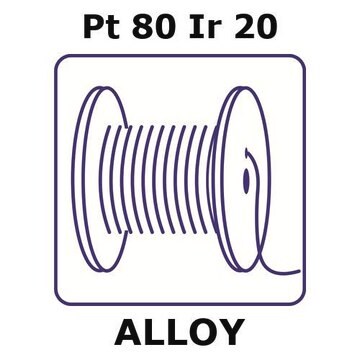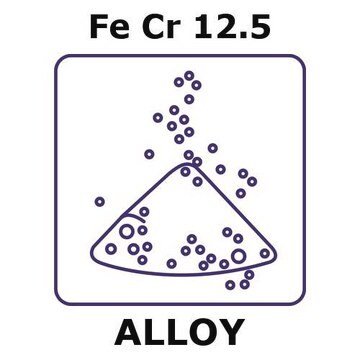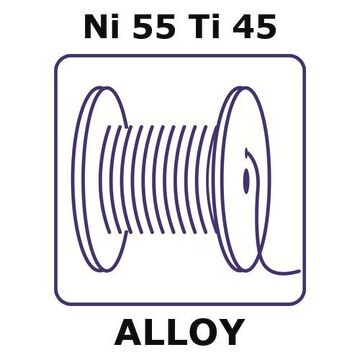GF46045627
Beryllium
wire reel, 0.2m, diameter 0.75mm, annealed and clean, 99%
Sinônimo(s):
Beryllium, BE005128, Glucinium
About This Item
Produtos recomendados
Ensaio
99%
Formulário
wire
temperatura de autoignição
1198 °F
fabricante/nome comercial
Goodfellow 460-456-27
resistividade
4.46 μΩ-cm, 20°C
C × diâmetro
0.2 m × 0.75 mm
p.e.
2970 °C (lit.)
pf
1278 °C (lit.)
densidade
1.85 g/mL at 25 °C (lit.)
cadeia de caracteres SMILES
[Be]
InChI
1S/Be
chave InChI
ATBAMAFKBVZNFJ-UHFFFAOYSA-N
Procurando produtos similares? Visita Guia de comparação de produtos
Descrição geral
Informações legais
Palavra indicadora
Danger
Frases de perigo
Declarações de precaução
Classificações de perigo
Acute Tox. 3 Oral - Carc. 1B - Eye Irrit. 2 - Skin Irrit. 2 - Skin Sens. 1 - STOT RE 1
Código de classe de armazenamento
6.1C - Combustible acute toxic Cat.3 / toxic compounds or compounds which causing chronic effects
Classe de risco de água (WGK)
WGK 3
Ponto de fulgor (°F)
Not applicable
Ponto de fulgor (°C)
Not applicable
Escolha uma das versões mais recentes:
Certificados de análise (COA)
It looks like we've run into a problem, but you can still download Certificates of Analysis from our Documentos section.
Se precisar de ajuda, entre em contato Atendimento ao cliente
Já possui este produto?
Encontre a documentação dos produtos que você adquiriu recentemente na biblioteca de documentos.
Nossa equipe de cientistas tem experiência em todas as áreas de pesquisa, incluindo Life Sciences, ciência de materiais, síntese química, cromatografia, química analítica e muitas outras.
Entre em contato com a assistência técnica









